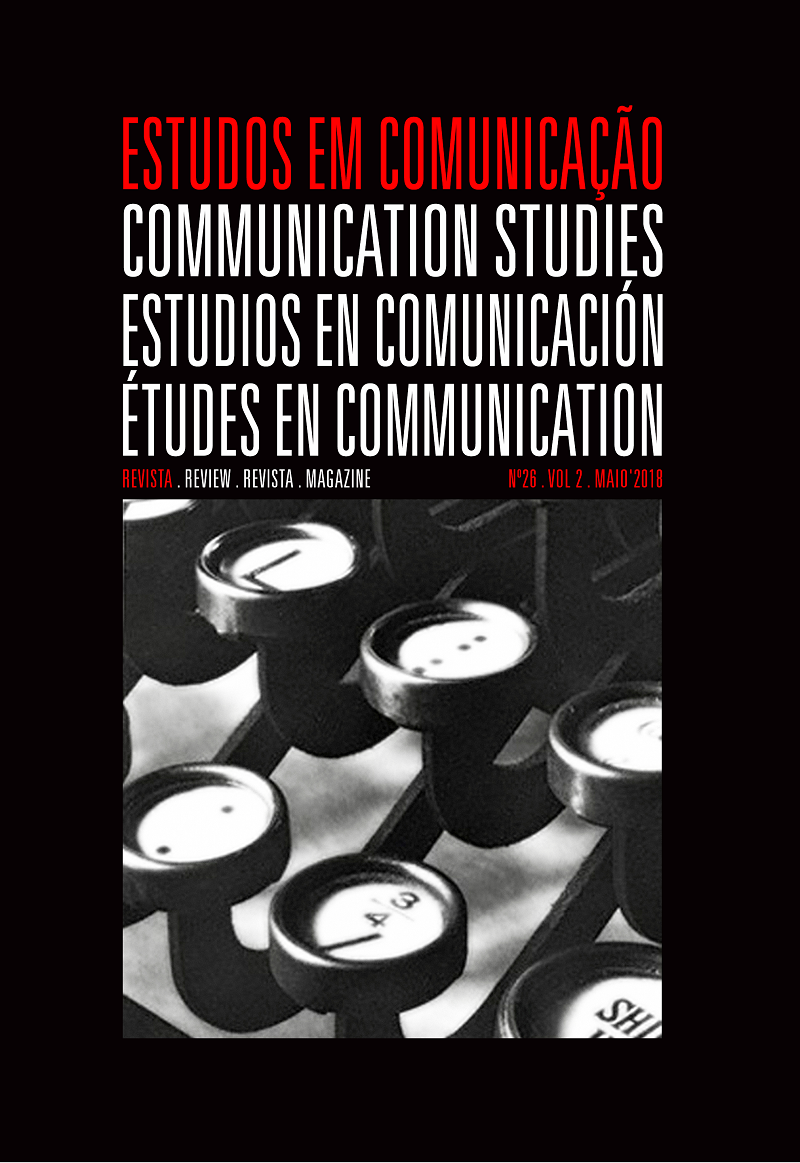Heróis de capa: dos tribunais para as listas de intenção de votos. A representação dos juízes Joaquim Barbosa e Sérgio Moro nas capas das principais revistas brasileiras entre 2007 e 2017
Keywords:
communication, politics, media.Abstract
In this essay, we focus on how the three main Brazilian weekly magazines – Veja, Época e Isto É – portrayed judges Joaquim Barbosa and Sérgio Moro, in the period between 2007 and 2017, in search of image construction of the "judge-hero". To support our view that there was a deliberate action by the editors to promote greater visibility to the aforementioned judges, we have compared the frequency of appearances by members of the Brazilian Judiciary on the covers of the weeklies in all editions between 1968 and 2017. Subsequently, we have dedicated more attention to the covers that presented the two judges, and we have carried out the textual analysis of the titles and subtitles that made up with the imagistic construction of the message objectified by the editorials of the magazines. Finally, we have cros- sed the information obtained with the results of a survey carried out in Brazil in 2017, where we have found the flagrant opposition, on the level of credi- bility manifested by Brazilians, between politicians and political institutions and between members of the judiciary and judicial institutions.
References
Abric, J.-C. (2001). Prácticas sociales y representaciones. (Trad. J. D. Chevrel & F. F. Palácios). México: Ediciones Coyacán.
Abril. Revista Veja. Disponível em: http://veja.abril.com.br/. Acessado em 01/10/17.
Castells, M. (2013). O poder da comunicação. (Trad. R. Espanha). Lisboa: Fundação Calouste Gulbenkian.
Editora Três. Revista IstoÉ. Disponível em: www.terra.com.br/istoeonline/. Acessado em 01/10/ 17.
FGV/DAPP. (s.d.). O Dilema do Brasileiro – Entre a descrença no presente e a esperança no futuro. Disponível em: http://dapp.fgv.br/wp-content/uploads/2017/10/FGV_DAPP_dilema_2017- 10-06_BV_pag-simples_web.pdf. Acessado em 20/10/17.
Globo. Revista Época. Disponível em: http://epoca.globo.com/. Acessado em 10/10/17. Acessado em 01/10/17.
Guia dos Quadrinhos (s.d.). Disponível em: www.guiadosquadrinhos.com/personagem/gibis- com/batman-(bruce-wayne)/2. Acessado em: 21/10/17.
Guareschi, P. et. al. (2001). A representação social da política. In Os construtores da informação: meios de comunicação, ideologia e ética (pp. 261-276), Ed.2. Petrópolis: Editora Vozes.
Hermes, J. (2006). Citizenship in the age of the internet. European Journal of Communication, 295-309. London: SAGE Publications.
Innerarity, D. (2010). O novo espaço público. (Trad. M. Ruas). Editorial Teorema: Lisboa.
Moraes, R. (1999). Análise de conteúdo. Revista Educação, 22(37), 7-32. Porto Alegre.
Moscovici, S. (1981). On social representation. In J. P. Forgas (ed.), Social cognition (pp. 181-209). London: European Association of Experimental Social psychology/ Academic Press.Trad. Ciélia Maria Nascimento-Schulze. Laccos, UFSC.
Mudde, C. & Kaltwasser, C. R. (2017). Populismo: uma brevíssima introdução. (Trad. M. de F. Carmo). Fundação Francisco Manuel dos Santos: Lisboa.
Queiroz, M. & Medeiros, M. (2017). Um cidadão para chamar de meu – a busca dos telejor- nais goianos pela legitimação de seu papel social na luta pela audiência. In C. Camponez et. al.
(ed.)Comunicação e Transformações Sociais – Comunicação Política, Comunicação Organizacional e Institucional, Cultura Visual, vol. 2 (pp. 142-155). Disponível em: www.bocc.ubi.pt/pag/sopcom/2-ix-congresso.pdf. (último acesso em 20/09/2017)
Revistas de Notícias. Disponível em: www.revistas.com.br. Acessado em 18/10/17.
Rubim, A. (2000). Comunicação e política. São Paulo: Hacker Editores.
Schwartzemberg, R.-G. (1978). O estado espetáculo. (Trad. H. de L. Dantas). Difel: Rio de Janeiro e São Paulo.
Strömbäck, J. (2008). Four phases of mediatization: an analysis of the mediatization of politics. Press/Politics, 13(3):228-246. DOI: 10.1177/1940161208319097. Sage Publications.
Downloads
Published
Issue
Section
License
Estudos em Comunicação/Communication Studies is an Open Access journal. All its content is freely available without charge to the user or his institution. Users are allowed to read, download, copy, distribute, print, search, or link to the full texts of the articles in this journal without asking prior permission from the publisher or the author. Estudos em Comunicação, by Labcom, is licensed under a Creative Commons Atribuição-NãoComercial-SemDerivações 3.0 Unported License. By submitting your work to Estudos em Comunicação/Communication studies you confirm you are the author and own the copyright, that the content is original and previously unpublished, and that you agree to the licensing terms.


